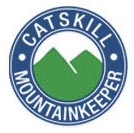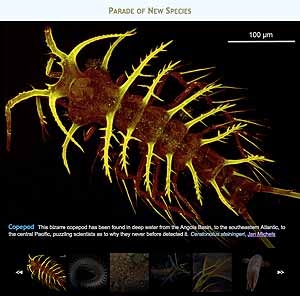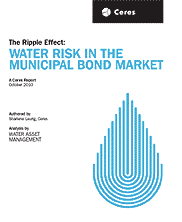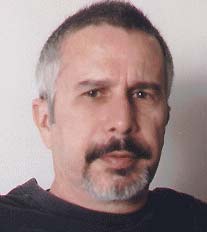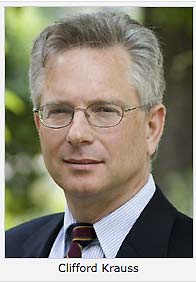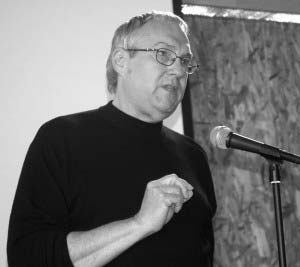Biblio
In the 1970s, Congress passed a host of environmental laws that sought to adopt a preventive approach to reducing disease and protecting health and environment. Since then, average body burdens of some persistent toxic materials such as lead and cadmium have fallen, but those of other newer materials, like persistent flame retardants, have risen.
The major obstacle to a protective chemicals management system remains the culture of trade secrecy that allows firms to withhold information about potential health and safety dangers of their products. In my book, The Secret History of the War on Cancer, and in recent testimony to the President’s Cancer Panel on cancer prevention, I have advanced the concept of a Truth and Reconciliation Commission on Toxic Hazards.
The current regulatory system has failed to protect workers, their families and communities. Under the present adversarial system, companies can legally withhold information on the dangers of workplace hazards under the rubric of trade secrets, and they can also legally conceal information on health hazards as part of sealed settlement agreements...
Author's note: This essay is in response to: What is the key obstacle to implementing an effective, health-protective, chemicals management system?
See: Sandra Steingraber. Living Downstream: An Ecologist's Personal Investigation of Cancer and the Environment
See: Marcellus-Shale.us. "Our Look at the The Halliburton Loophole":
This exemption (from the Clean Water Act - authorized by the Energy Policy Act of 2005) allows non-disclosure of the toxic ingredients used near wells and aquifiers in drilling and waste injection. The rush to exploit the Marcellus Shale (referred to by BP's Tony Heyward as a "game-changer") allows gas drillers to legally keep secret the contents of the fracturing fluids used in fracking. Endocrinologist Dr. Adam Law of Ithaca, New York recently testified at the EPA Hearings in Binghamton that doctors cannot treat patients for exposure to chemicals if they don't know what they were exposed to. TEDX, The Endocrine Disruption Exchange, directed by Dr. Theo Colborn in Colorado continues to investigate the relationship between health and environmental distress.
See: Poisoned profits : the toxic assault on our children
See: Tox Town
See: The National Children's Study (2010)
The National Children’s Study will examine the effects of the environment, as broadly defined to include factors such as air, water, diet, sound, family dynamics, community and cultural influences, and genetics on the growth, development, and health of children across the United States, following them from before birth until age 21 years. The goal of the Study is to improve the health and well-being of children and contribute to understanding the role various factors have on health and disease. Findings from the Study will be made available as the research progresses, making potential benefits known to the public as soon as possible.
See:Fracking: Implications for Human and Environmental Health
Catskill Mountainkeeper is a member based advocacy organization dedicated to preserving and protecting the long term health of the six counties of the Catskill Region. Up to date news about gas drilling, boating, bears, stories, and more.
See: People's Stories
Our mission is to explore life beneath the seafloor and make transformative discoveries that advance science, benefit society, and inspire people of all ages and origins.
In a provocative 1992 essay, Thomas Gold postulated the existence of a "deep, hot biosphere", supported by geological energy sources. The potential for the oceanic deep biosphere to influence global biogeochemical processes scales with the size of the subseafloor as a habitat.
See: Probe Earth's Interior with Advanced Radiation Sources
The ramifications of a massive buried biosphere of "intraterrestrial microbes" are significant, leading to paradigm shifts in our thinking in the biosciences and geosciences.
"Despite an intense focus on discovering abiotic hydrocarbon sources in natural settings, only a handful of sites convincingly suggest that abiotic organic synthesis occurs within the geosphere...
...The crux of this topic is that currently there is no foolproof approach to distinguishing abiotic versus biotic organic synthesis. Thus, it is especially important to be cognizant of the possibilities and limitations of abiotic hydrocarbon production when considering a deep subsurface biosphere where the organic matter may be synthesized by both abiotic and biotic processes." (Proskurowski, 2010)
See: Life in the Oceans | The Why Files.
See: The Sloan - Deep Carbon Observatory (DCO)
The Deep Carbon Observatory is a program of the Carnegie Institution for Science, Alfred P. Sloan Foundation, and the Carnegie Institution of Washington.
The Sloan - DCO mission includes the fostering of international cooperation in addressing global-scale questions, including the nature and extent of deep microbial life, the fluxes of carbon dioxide from the world's volcanoes, and the distribution and characteristics of deep hydrocarbon reservoirs.
The DCO is currently composed of four science directorates: Deep Life; Reservoirs and Fluxes; Energy, Environment, and Climate; and Physics and Chemistry of Carbon.
Gold, Thomas. The Deep Hot Biosphere : The Myth of Fossil Fuels. New York: Springer | Copernicus, 1998.
Goncharov, Alexander. “Unanswered Questions in Deep Carbon Research” presented at the 2009 Annual Meeting keynote | Sloan Deep Carbon Cycle Workshop, Carnegie Institution, Geophysical Laboratory | Washington, D.C., May 15, 2008. (PDF 4.4 MB)
Proskurowski, G. “Abiogenic Hydrocarbon Production at the Geosphere-Biosphere Interface via Serpentinization Reactions” in Timmis, Kenneth N., ed. Handbook of Hydrocarbon and Lipid Microbiology. Berlin, Heidelberg: Springer, 2010.
The Center for Healthy Environments and Communities (CHEC) exists to help individuals & communities identify the most important environmental problems facing them - empowering & energizing them with tools to prioritize & develop their own action plans towards more sustainable solutions for a healthy environment. Read more»
Check out FracTracker.org! The blog part provides a forum to discuss the impacts you have seen or felt regarding natural gas drilling in this region, as well as share data through the site's online data tool.
The data tool is an online information commons where you can access & upload all sorts of geographically-linked data. We will be hosting regional training sessions this summer on how to use FracTracker. Contact us with questions or to find out when & where the trainings will occur.
According to a review by Josh Kusnetz of ProPublica, FracTracker "allows people to search by topic or select a specific area on a map. It also shows who uploaded the specific data set and whether other people have downloaded it or found it helpful.
Since anyone can upload a data set, this transparency is critical to determining whether the information is reliable. CHEC will remove irrelevant data, but it doesn’t vet everything for accuracy. CHEC is counting on users to police the data themselves and to distinguish the good from the bad."
According their website, Ceres (pronounced “series”) is a national network of investors, environmental organizations and other public interest groups working with companies and investors to address sustainability challenges such as global climate change.
Ceres also directs the Investor Network on Climate Risk, a network of 90 investors with collective assets totaling about $10 trillion.
See: Ceres. August 5, 2010. "Investors Managing $2.5 Trillion Press Energy Companies to Better Disclose Spill Prevention and Response Plans for Deepwater Wells Worldwide".
"It is important for all companies involved in subsea deepwater drilling to be open and transparent with investors and stakeholders at this crucial historic moment," wrote the investors.
A report published on 3BL Media, Dec. 14, 2010, stated that the request was made in a letter last week from the Investor Network on Climate Risk (INCR), a network of 98 investors with collective assets totaling over $9 trillion. It was sent to the National Commission on the BP Deepwater Horizon Oil Spill and Offshore Drilling, whose final report and recommendations are expected in January. It was signed by Mindy S. Lubber President, Ceres Director, Investor Network on Climate Risk.
See: The Investor Environmental Health Network. 2010. Overview: Hydraulic Fracturing for Natural Gas Development.
See: Before the Big Spill | Mixplex
See: National Commission on the BP Deepwater Horizon Oil Spill and Offshore Drilling | Mixplex
See: Sharlene Leurig, Water Asset Management, Ceres Report. October 2010. "The Ripple Effect: Water Risk in the Municipal Bond Market". Investor Network on Climate Risk. (PDF Download 6.6MB).
This report shows that few participants in the bond market—including investors, bond rating agencies and the utilities themselves—are accounting for growing water scarcity, legal conflicts and other threats in their analyses.
See: Futurism Now
See: H2Oil: An Explanation of the Tar Sands in Alberta
See: Keystone XL Pipeline - Issues
See: As You Sow - Corporate Accountability, Shareholder Action, and ToxicsReduction
Home page of "one of the largest producers of natural gas in the nation and the most active driller of new wells in the U.S."
Follow links on lower right side to See: Dave Spigelmeyer, Vice-President Government Relations, Chesapeake Energy.
"Open Letter to the State of New York", (February 18, 2010) advertisement publshed in Elmira Star-Gazette.
Read between the lines at The Fighting 29th, a New York State blog, home to former Congressman Eric Massa who resigned in March 2010.
See also: Chesapeake Energy: Fact Sheets On Horizontal Drilling, Hydraulic Fracturing and Water Usage. Chesapeake Energy's Media Resources Page includes: Chesapeake (Chesapeake). 2009a. Hydraulic Fracturing Fact Sheet, May 2009. Submitted to U.S. House of Representative Committee on Natural Resources.
...Open and honest communication, a safe working environment, ethical business practices and good neighbor initiatives are all an important part of how we do business each and every day.
Chief's gas well in Moundsville, West Virginia exploded June 7, 2010. Read the report from Pittsburgh Tribune Review.
Chief's most recent focus has been the development of the Marcellus Shale, a formation that runs from the southern tier of New York, through the western portion of Pennsylvania into the eastern half of Ohio and through Maryland and West Virginia. Chief currently holds more than 580,000 acres in Appalachia.
Susan Christopherson, J. Thomas Clark Professor of City and Regional Planning, has received a $100,000 grant from the Ithaca-based Park Foundation to study the economic effects of the proposed drilling in the Marcellus Shale, a rock formation that extends from New York south into Pennsylvania, Ohio, and West Virginia.
Christopherson has proposed conducting a $300,000 study that will examine issues such as the effects of the increase in gas drilling on schools, public health, and transportation systems.
The research project will be supported by several funders. “The question is, ‘What is going to be the cumulative effect of this kind of activity?’” says Christopherson, who specializes in economic development. “People are looking at this question from an environmental perspective, but no one is looking at it from an economic perspective.”
Christopherson worries about a “boom town” effect created by the surge of companies that want to extract natural gas from the Marcellus Shale. “We have had these periodically in the U.S. like the Gold Rush, where you get lots of people coming into an area in order to extract natural resources and then leaving,” she says.
Her hope is that the gas drilling could create a long-term investment in the economy of the Southern Tier. “I think they could do that,” she says, “but it has to be done very carefully. There has to be careful planning for the economy and to protect the environment. What people rarely recognize is that good environmental planning will also produce better economic outcomes.”
New York's drinking water is under threat from dirty drilling made possible by "hydraulic fracturing" -- but it doesn't have to be.
We can take a drilling "time-out" -- to learn the hard-won lessons of drilling-polluted communities in Pennsylvania, Colorado, and everywhere drillers pushed ahead without adequate regulation and enforcement.
How and Why Clean Water Protections Are Being Weakened
The Clean Water Act, as written in 1972, safeguards all of the "waters of the United States," through a number of programs. The federal Environmental Protection Agency (EPA) and Army Corps of Engineers regulations implementing the law have for decades reflected the intent of Congress to protect all of America's waters. These rules had been upheld by the vast majority of state and federal courts.
In 2001, however, a bare majority of the Supreme Court-in a case called Solid Waste Agency of Northern Cook Cty. v. Army Corps of Engineers - ruled 5-4 that the presence of a habitat for migratory birds is not sufficient justification for protection of a water that does not flow year round or that is an "isolated" wetland under the Clean Water Act. The decision in Rapanos v. United States in 2006 created further confusion about which waters deserved protection under the Clean Water Act.
...The Clean Water Restoration Act of 2009(S 787) introduced by Sen. Russell Feingold, D-WI, would accomplish these important goals and has been endorsed by Clean Water Action."
Clean Water Action: A Brief History
Mission Statement
Clean Water Action is an organization of 1.2 million members working to empower people to take action to protect America's waters, build healthy communities and to make democracy work for all of us. For 36 years Clean Water Action has succeeded in winning some of the nation's most important environmental protections through grassroots organizing, expert policy research and political advocacy focused on holding elected officials accountable to the public.
Passage of the original 1972 Clean Water Act, with many of the law's most important parts drafted by Clean Water Action, has been followed by other major successes. They include enactment of the federal Safe Drinking Water Act in 1974 and subsequent changes in 1996 that strengthened the law. Clean Water Action's successful defense in 1977 of the Clean Water Act's wetlands protection program was won by a single vote in the U.S. Senate.
Paul Schwartz, Clean Water Action National Policy Coordinator
202-895-0420 ext. 105
Take Action!
Clean Water Action: A Brief History
Mission Statement
Clean Water Action is an organization of 1.2 million members working to empower people to take action to protect America's waters, build healthy communities and to make democracy work for all of us. For 36 years Clean Water Action has succeeded in winning some of the nation's most important environmental protections through grassroots organizing, expert policy research and political advocacy focused on holding elected officials accountable to the public.
After having seen the powerful documentary Gasland that shows the impact of “fracking” on households across the United States, including flammable tap water and cancer clusters that are the inevitable outcome of natural gas drilling byproducts, I have begun to pay closer attention to news coverage, including my hometown papers in Upstate NY where energy companies are attempting to buy support from impoverished land owners.
So with that in mind, I read the article “When a Rig Moves In Next Door” by Clifford Krauss and Tom Zeller Jr. in the Business section of today’s NY Times with keen interest.
As is so often the case with the newspaper of record, it has to maintain the illusion of objectivity, so necessary for its market niche: college-educated professionals who vote Democrat, watch PBS, listen to NPR, drive a Lexus, and donate money to the ACLU or mainstream environmentalist organizations. It simply would not suffice for Krauss and Zeller Jr. to write the sort of thing that you would hear from Rupert Murdoch hirelings, even if it amounts to the same thing more or less.
I especially enjoyed his reporting on how some environmentalists are for gas drilling despite the inflammatory water faucets and cancer clusters:
"Some environmentalists support fracking and other means of extracting natural gas because gas emits a fraction of the carbon of either oil or coal. They also prefer it because it could replace coal as the nation’s principal source of electricity and provide a lower-carbon bridge before renewable energy sources can be developed on a larger scale."
You don’t have to be working at FAIR to ask the question which environmentalists?
I am the moderator of the Marxism mailing list, where my various articles first appear.
Climate Ground Zero started out as a campaign against oil and tar sands in Montana and Canada. Upon requests by local activists working to end mountaintop removal coal mining, Climate Ground Zero moved to Rock Creek, West Virginia.
Coal River Mountain was the last mountain to remain untouched by mountaintop removal mining in the Coal River Valley. Climate Ground Zero’s direct action campaign took off when Coal River Mountain was clear-cut in preparation for mountaintop removal in February of 2009. Since then over 150 people have been arrested in various actions on Coal River Mountain and other mountaintop removal sites in West Virginia.
Climate Ground Zero is not an environmental organization; it is an ongoing campaign of non-violent civil resistance in southern West Virginia to end mountaintop removal. Here at Climate Ground Zero we believe that the irrevocable destruction of the mountains of Appalachia and its accompanying toll on the air, water, and lives of Appalachians necessitates continued and direct action.
In West Virginia, an overwhelming majority of residents are opposed to mountaintop removal mining. However, political interests are highly invested in the coal industry and the EPA and the West Virginia DEP refuse to take real action to protect the environment and the people of West Virginia.
In order to stop mountaintop removal, we need to awaken the country to the devastation that mountaintop removal inflicts on one of the most biodiverse regions in the world, Appalachia, and its people. Since Climate Ground Zero came to West Virginia in 2009, hundreds of activists have come to the coalfields and stood with the residents of West Virginia to demand an end to the destruction.
Climate Ground Zero is a project of the American Forest Alliance and works in cohesion with Mountain Justice, a regional network of organizations in Kentucky, Tennessee, Virginia, and West Virginia, that seek the abolition of mountaintop removal in Appalachia and throughout the country.
July 25, 2009
Alexa Jay. December 2, 2010. Climate Science Watch. "Final hearing of the House global warming committee: 'a fight that is far from over'".
“There is growing evidence from the real world that climate changes are accelerating faster than we originally feared and that impacts—already appearing—will be more widespread and severe than expected. This makes the arguments against taking actions against climate change not just wrong, but dangerous,” Dr. Gleick said in his written testimony.
See: Tara Lohan. Feb. 19, 2009. Alternet. "Peter Gleick: How We Can Avoid a World Without Water". Interview with Peter Gleick.
Rick Piltz. Nov. 1, 2009. "On 'Editing Scientists' at the White House Council on Environmental Quality".
Scientific American contrasts CEQ chair Nancy Sutley’s stated position on science and policy at the White House with what we observed, reported, and documented under her Bush-Cheney CEQ predecesors, and what the House Oversight and Government Reform Committee discovered in its lengthy investigation initiated after we leveled our charge. “My role here and CEQ’s role is to advise the president on environmental policy,” says Sutley. “The science is what the science is…I am not editing science.”
When Nancy Sutley moved in to her new office as chair of the Council on Environmental Quality (CEQ)—a 40-year-old White House environmental policy advisory office created by Congress—she found a lot of red pens. Immediately, she removed the pens from her desk and asked her staff to remove any red pens from their desks, as well.
“The White House should not be in the business of editing science,” Sutley says. “Let the scientists do the science. It’s a really easy bright line for me.”
Rick Piltz is the Founder and Director of Climate Science Watch
Rick has worked as an educator, writer, and policy analyst and advocate since the 1970’s, in federal and state government, academia, and nonprofit organizations. During his more than 20 years in Washington, his primary focus has been on the collision of climate science with the reality of climate politics and policy.
From 1995-2005 he held senior positions in the Coordination Office of the U.S. Global Change Research Program. In the spring of 2005, Rick resigned from his position to protest the Bush Administration’s political interference with climate change communication. His whistleblower documentation of politically motivated White House editing and censorship of climate science program reports intended for the public and Congress received front-page coverage in the New York Times and was widely reported in the media. Rick testified before both the House of Representatives and the Senate at hearings on political interference with federal climate scientists.
See: Whistleblower.org
See: Public Supports Consumer and Environmental Protections, Polls Show
Eighteen Republican members of the Colorado State Legislature Monday sent a letter (pdf) to the U.S. Environmental Protection Agency (EPA) demanding the federal agency refrain from regulating the natural gas drilling practice of hydraulic fracturing, or “fracking,” no matter what a two-year EPA study of the process reveals.
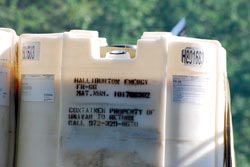
Halliburton frac fluid on a tractor trailer near Buffalo, Pa. Source: Marcellus-Shale.us
See: Christoper Hayes. The Rachel Maddow Show on MSNBC: Fossil Fuel Follies, at 2:22.








